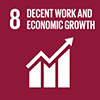Description/achievement of initiative
Guangzhou's new world-class BRT system integrates with bike lanes, bike share and metro stations, raising the bar for all cities and earning Guangzhou the Sustainable Transport Award in 2011.
Source: Institute for Transportation and Development Policy
The Guangzhou BRT, which opened in February 2010, is the system that breaks the mold of low to medium capacity BRT that was becoming entrenched in Asia, and is the first "metro replacement" level BRT system outside South America. Guangzhou's BRT has more than triple the peak passenger flows of any other BRT system in Asia, and also significantly higher than most metro systems, and carries 800,000 daily passenger-trips (not including transfers). Guangzhou's BRT is already carrying more daily passengers than all of the city's five metro lines, and has a higher peak passenger flow (27,000 pphpd) than all of mainland China's metro lines, with the exception of Line 2 in Beijing and possibly also Line 1 in Beijing.
In June 2010 Guangzhou launched a bike sharing system with 5,000 bikes and 113 stations, primarily along the BRT corridor. The full first phase system included 15,000 bikes, making Guangzhou one of the ten largest bike sharing systems worldwide. Guangzhou has also begun to re-introduce bike lanes on major roadways, with dedicated bike lanes along the BRT corridor. Guangzhou also opened 5,500 bike parking positions at BRT station areas, including double-tier bike parking racks at several key stations.
In September 2010 Guangzhou opened the Donghaochong greenway along a polluted former canal, which is part of a wider project to build dozens of kilometers of high quality greenways throughout the city. This project created a 4km off-street bikeway and walkway combined with parks and plazas and areas for children to play alongside the water.
Implementation methodologies
Arrangements for Capacity-Building and Technology Transfer
Coordination mechanisms/governance structure
Partner(s)

